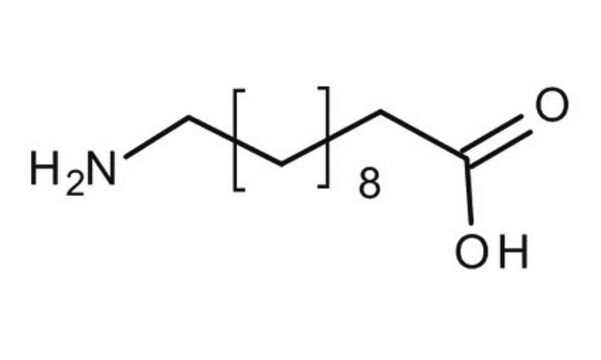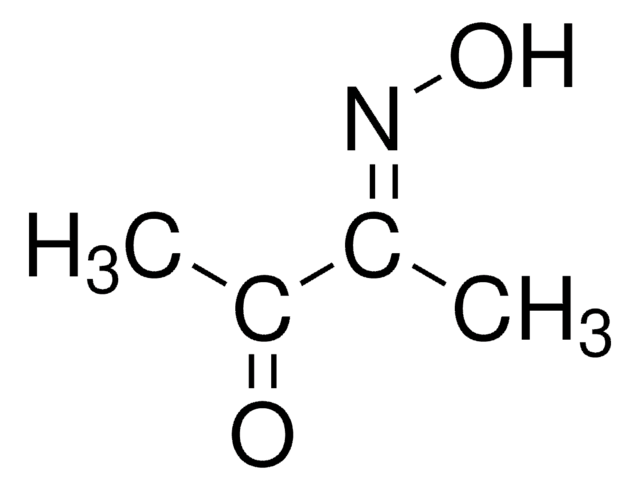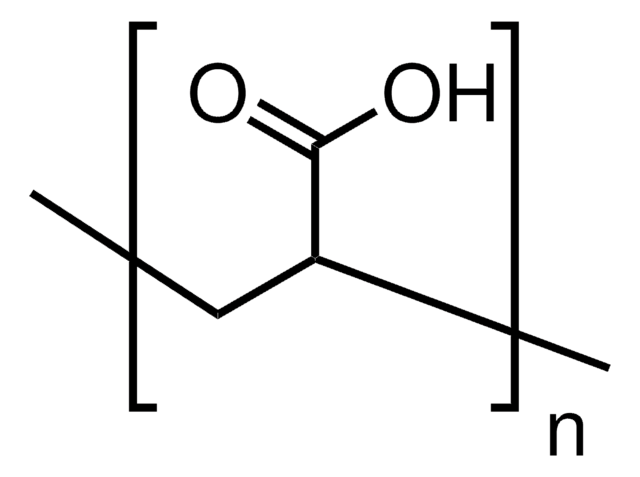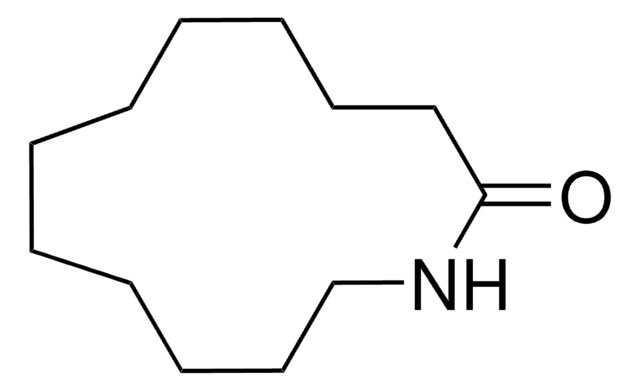A82605
11-Aminoundecanoic acid
97%
Sinonimo/i:
Aminoundecanoic acid
Autenticatiper visualizzare i prezzi riservati alla tua organizzazione & contrattuali
About This Item
Formula condensata:
NH2(CH2)10CO2H
Numero CAS:
Peso molecolare:
201.31
Beilstein:
1767291
Numero CE:
Numero MDL:
Codice UNSPSC:
12352106
ID PubChem:
NACRES:
NA.22
Prodotti consigliati
Livello qualitativo
Saggio
97%
Stato
powder
Impiego in reazioni chimiche
reaction type: solution phase peptide synthesis
Colore
white
Punto di fusione
188-191 °C (lit.)
applicazioni
peptide synthesis
Stringa SMILE
NCCCCCCCCCCC(O)=O
InChI
1S/C11H23NO2/c12-10-8-6-4-2-1-3-5-7-9-11(13)14/h1-10,12H2,(H,13,14)
GUOSQNAUYHMCRU-UHFFFAOYSA-N
Cerchi prodotti simili? Visita Guida al confronto tra prodotti
Descrizione generale
11-Aminoundecanoic acid also known as aminoundecanoic acid, is utilized in solution phase peptide synthesis. It is also a monomer precursor for nylon-11.
Applicazioni
11-Aminoundecanoic acid can be used as a linker to synthesize amide-linked linear guanosine dimer.
Codice della classe di stoccaggio
13 - Non Combustible Solids
Classe di pericolosità dell'acqua (WGK)
WGK 1
Punto d’infiammabilità (°F)
Not applicable
Punto d’infiammabilità (°C)
Not applicable
Dispositivi di protezione individuale
Eyeshields, Gloves, type N95 (US)
Scegli una delle versioni più recenti:
Possiedi già questo prodotto?
I documenti relativi ai prodotti acquistati recentemente sono disponibili nell’Archivio dei documenti.
I clienti hanno visto anche
DNA binding assay with 11-aminoundecanoic acid-[11-14C] in F-344 rats.
H Peter et al.
Archives of toxicology, 61(1), 86-87 (1987-01-01)
[Antibacterial effect of an ammonium salt of 11-aminoundecanoic acid. 5. Organic ammonium salts].
F Devínsky et al.
Die Pharmazie, 34(9), 574-574 (1979-01-01)
J K Dunnick et al.
Fundamental and applied toxicology : official journal of the Society of Toxicology, 3(6), 614-618 (1983-11-01)
11-Aminoundecanoic acid, the monomer of nylon 11, was toxic to the urinary tract of both male and female B6C3F1 mice and Fischer 344 rats, when administered in the diet at 7500 or 15 000 ppm for 103-104 weeks. Dose-related effects
E J Matthews
Environmental health perspectives, 101 Suppl 2, 311-318 (1993-07-01)
A co-culture clonal survival assay was developed to measure the cytotoxicity of test chemical treatments to BALB/c-3T3 cells because the standard clonal survival assay using 200 wild type (WT) cells frequently overestimates chemical cytotoxicity when compared with identical treatment doses
Zhiyong Qian et al.
Biomaterials, 25(11), 1975-1981 (2004-01-27)
In this paper, a new kind of aliphatic biodegradable polyesteramide copolymers P(CL/AU)x/y based on epsilon-caprolactone and 11-aminoundecanoic acid were synthesized by the melt polycondensation method. Hydrolytic degradation behavior of P(CL/AU) copolymers were studied by using FTIR, 1H-NMR and DSC. Chemical
Il team dei nostri ricercatori vanta grande esperienza in tutte le aree della ricerca quali Life Science, scienza dei materiali, sintesi chimica, cromatografia, discipline analitiche, ecc..
Contatta l'Assistenza Tecnica.













